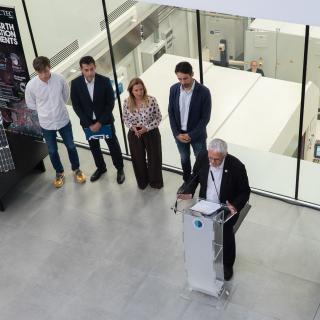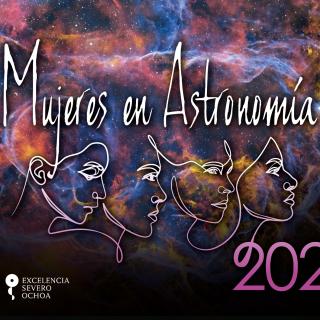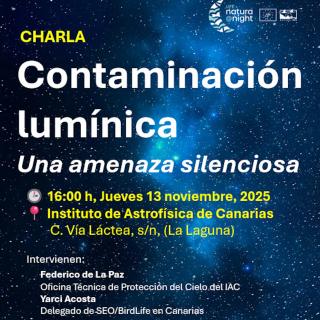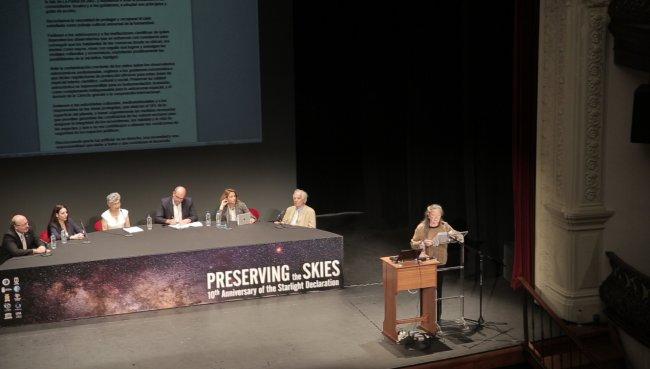It may interest you
-
 La presidenta del Cabildo de Tenerife, Rosa Dávila, ha anunciado esta mañana la aprobación de una subvención de 2,2 millones de euros al Instituto de Astrofísica de Canarias (IAC) para la fabricación de DRAGO-3, una cámara de última generación que se integrará en una constelación global de satélites en órbita baja. Esta red de satélites interconectados está concebida para ofrecer servicios globales o regionales para Tenerife. El importe exacto de la subvención asciende a 2.208.120 euros. El anuncio se ha realizado durante una visita a las instalaciones de IACTEC, la división tecnológica delAdvertised on
La presidenta del Cabildo de Tenerife, Rosa Dávila, ha anunciado esta mañana la aprobación de una subvención de 2,2 millones de euros al Instituto de Astrofísica de Canarias (IAC) para la fabricación de DRAGO-3, una cámara de última generación que se integrará en una constelación global de satélites en órbita baja. Esta red de satélites interconectados está concebida para ofrecer servicios globales o regionales para Tenerife. El importe exacto de la subvención asciende a 2.208.120 euros. El anuncio se ha realizado durante una visita a las instalaciones de IACTEC, la división tecnológica delAdvertised on -
 The project “ Habla con Ellas: Mujeres en Astronomía” (Talk to Them: Women in Astronomy) of the Instituto de Astrofísica de Canarias (IAC) begins today its seventh edition in Spain as part of the celebrations of the International Day of Women and Girls in Science. Aimed at the Spanish educational community, it seeks to create new professional role models in science and technology, as well as to inspire new generations, especially girls, to follow in their footsteps. In this edition, the project will feature 36 female astrophysicists, engineers and technologists from the IAC, the CanaryAdvertised on
The project “ Habla con Ellas: Mujeres en Astronomía” (Talk to Them: Women in Astronomy) of the Instituto de Astrofísica de Canarias (IAC) begins today its seventh edition in Spain as part of the celebrations of the International Day of Women and Girls in Science. Aimed at the Spanish educational community, it seeks to create new professional role models in science and technology, as well as to inspire new generations, especially girls, to follow in their footsteps. In this edition, the project will feature 36 female astrophysicists, engineers and technologists from the IAC, the CanaryAdvertised on -
 Especialistas abordarán el impacto de la iluminación artificial excesiva y sus efectos sobre la astronomía, la salud humana y la biodiversidad El Instituto de Astrofísica de Canarias (IAC) y SEO/BirdLife Canarias celebran la conferencia " Contaminación Lumínica: Una Amenaza Silenciosa", una jornada clave para la protección del medio ambiente y el patrimonio científico del archipiélago. La ponencia estará a cargo de Federico de la Paz, técnico del IAC, y Yarci Acosta de Seo/Birdlife, quien desgranará los graves riesgos que el uso ineficiente y descontrolado de la luz artificial supone para laAdvertised on
Especialistas abordarán el impacto de la iluminación artificial excesiva y sus efectos sobre la astronomía, la salud humana y la biodiversidad El Instituto de Astrofísica de Canarias (IAC) y SEO/BirdLife Canarias celebran la conferencia " Contaminación Lumínica: Una Amenaza Silenciosa", una jornada clave para la protección del medio ambiente y el patrimonio científico del archipiélago. La ponencia estará a cargo de Federico de la Paz, técnico del IAC, y Yarci Acosta de Seo/Birdlife, quien desgranará los graves riesgos que el uso ineficiente y descontrolado de la luz artificial supone para laAdvertised on
